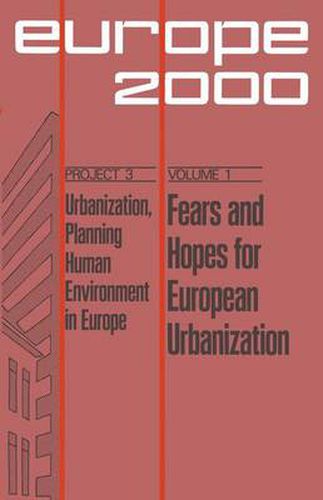Readings Newsletter
Become a Readings Member to make your shopping experience even easier.
Sign in or sign up for free!
You’re not far away from qualifying for FREE standard shipping within Australia
You’ve qualified for FREE standard shipping within Australia
The cart is loading…






Urbanization is a process taking place in our society, which is changing from a predominantly rural and agrarian society into a predominantly urban and industrial one. This is a transformation which is not just taking place in certain areas, it is not merely a concentration of houses and of people and of activities, but what is perhaps much more important: it is also a change in the way of life. Although there are regional differences, which exist within every nation and between the nations of Europe, the process is a general one, it is omnipresent. Whether the country is rich or poor, it still spends between 15% and 25% of all invested capital on the formation of physical assets (housing, for example). It uses another 15% to 20% on various urban services (roads, utilities). Including domestic power, this means that everywhere about half of the investment resources available are spent on the process of urbanization. Much more significant than this financial way of indicating the im portance of urban society and of the urbanization process, but much less clearly expressed in figures, is the fact that it is in the cities that the great evolutions are taking place from the society of the present towards the society of the future. The big cities and conurbations are the breeding grounds of technological innovation, of new forms of organization, of the creation of new activities, of new social relations and of new forms of culture.
$9.00 standard shipping within Australia
FREE standard shipping within Australia for orders over $100.00
Express & International shipping calculated at checkout
Urbanization is a process taking place in our society, which is changing from a predominantly rural and agrarian society into a predominantly urban and industrial one. This is a transformation which is not just taking place in certain areas, it is not merely a concentration of houses and of people and of activities, but what is perhaps much more important: it is also a change in the way of life. Although there are regional differences, which exist within every nation and between the nations of Europe, the process is a general one, it is omnipresent. Whether the country is rich or poor, it still spends between 15% and 25% of all invested capital on the formation of physical assets (housing, for example). It uses another 15% to 20% on various urban services (roads, utilities). Including domestic power, this means that everywhere about half of the investment resources available are spent on the process of urbanization. Much more significant than this financial way of indicating the im portance of urban society and of the urbanization process, but much less clearly expressed in figures, is the fact that it is in the cities that the great evolutions are taking place from the society of the present towards the society of the future. The big cities and conurbations are the breeding grounds of technological innovation, of new forms of organization, of the creation of new activities, of new social relations and of new forms of culture.